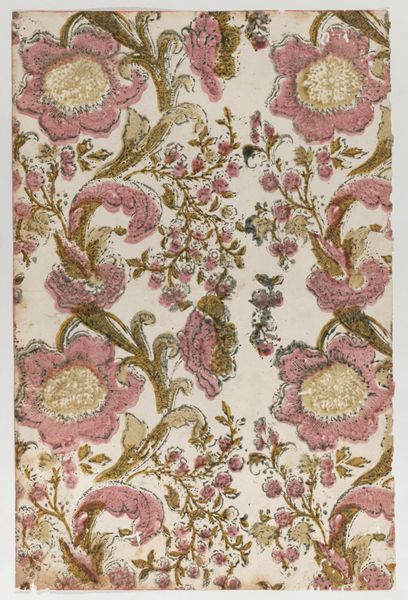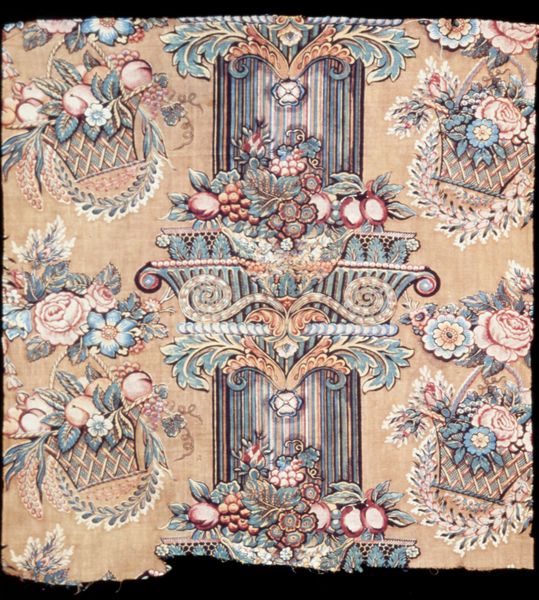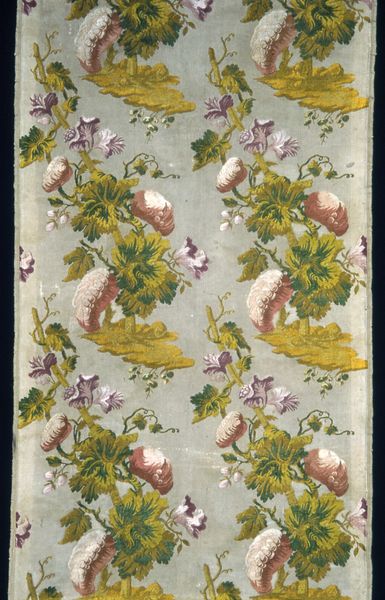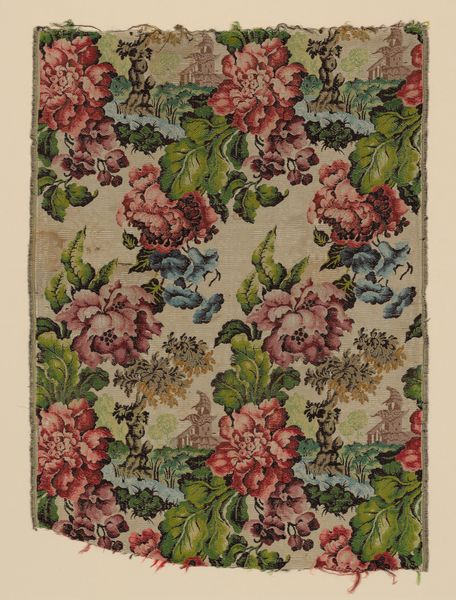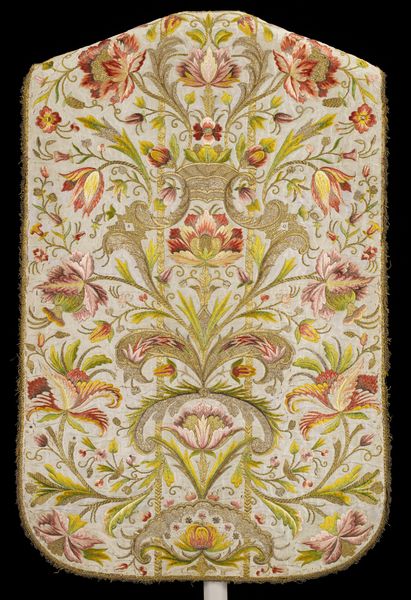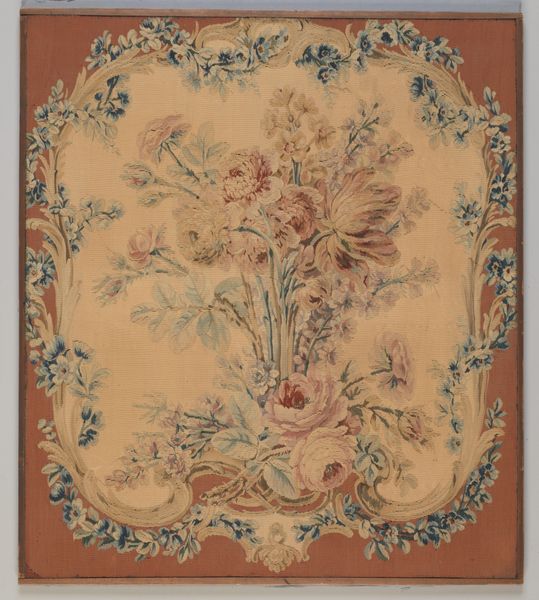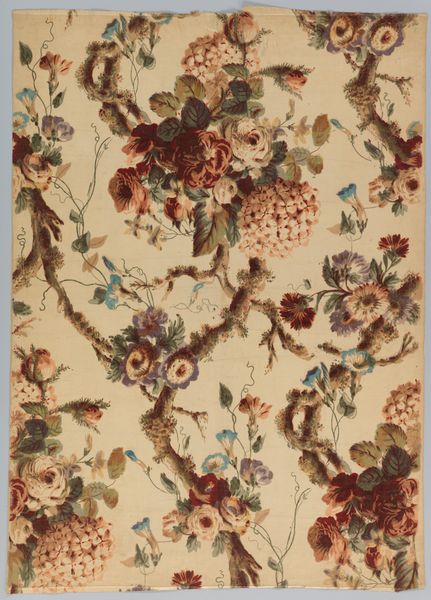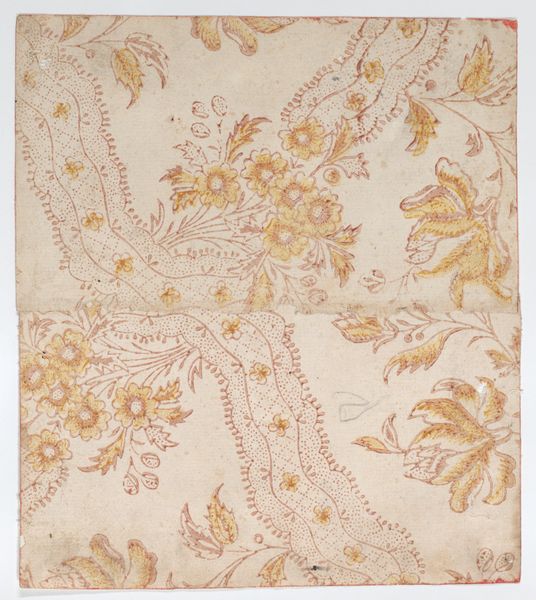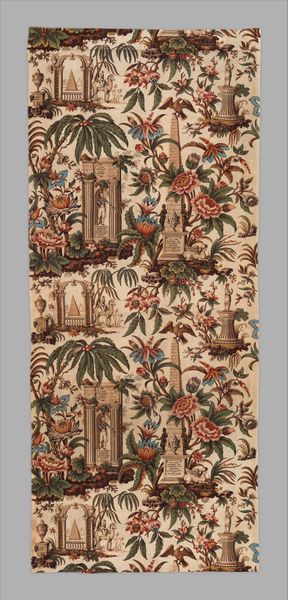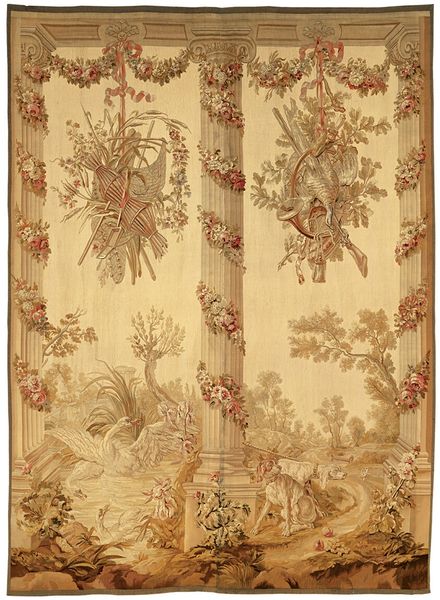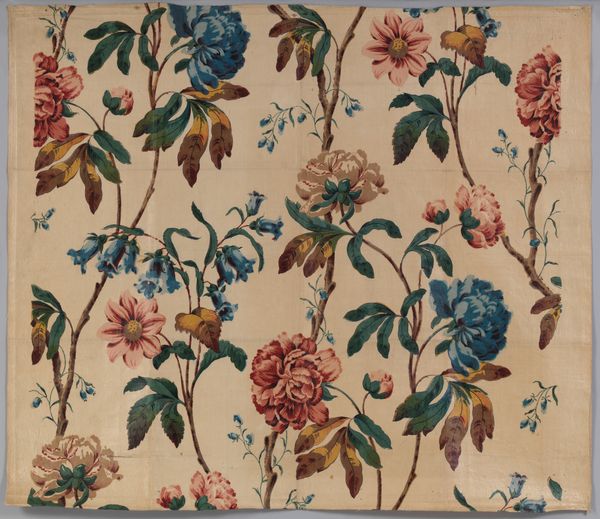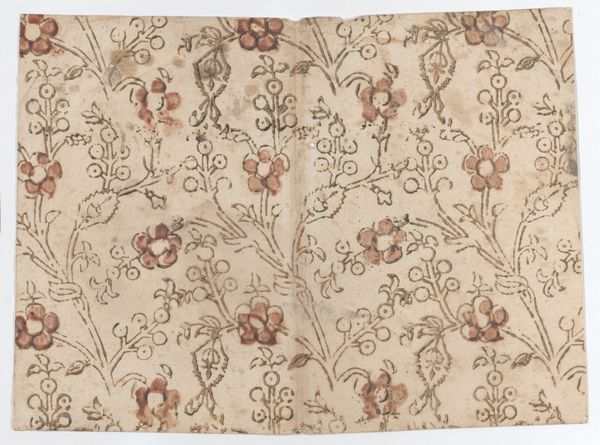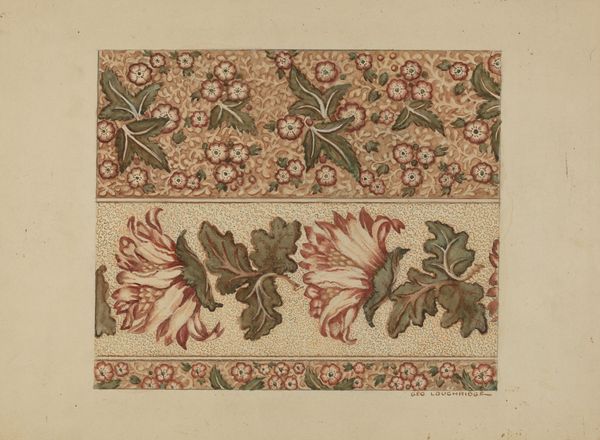
painting, plein-air, textile, watercolor
#
water colours
#
painting
#
plein-air
#
landscape
#
textile
#
watercolor
#
decorative-art
#
mixed media
#
decorative art
#
watercolor
#
rococo
Dimensions: 20 1/2 x 21 in. (52.07 x 53.34 cm)
Copyright: Public Domain
Editor: So, this is "Pillow Top," made around the 18th century by an anonymous artist, and it's currently held at the Minneapolis Institute of Art. It seems to be a textile piece, almost like a fragment. What really catches my eye is its repetitive floral pattern juxtaposed with these miniature landscape scenes. What do you make of it? Curator: That’s an interesting observation about the juxtaposition. I see this piece as a reflection of the Rococo era’s fascination with artifice and the natural world. The textile itself would have been a symbol of luxury and domestic comfort, intended for private, interior spaces. It speaks volumes about the era's elite and their access to goods and cultivated sensibilities. The combination of flowers and architectural motifs offers an interesting interplay, almost a "nature tamed" perspective so en vogue with wealthy Europeans. Think about how it would have adorned someone's home and its social implications then. Editor: It's amazing to think about the political and social context embedded within what appears to be a simple pillow top. Were these types of textiles commonly made at the time? Curator: Indeed, textiles held significant cultural and economic value during that time. The Rococo style, favored by the aristocracy, permeated even domestic goods. Its creation and display reflect intricate power dynamics tied to social status and access to resources, which drove fashion. Editor: So, it’s less about the flowers themselves and more about what the fabric represents in its time? Curator: Exactly. Consider the labour involved in creating such detailed patterns – that also communicates wealth, access and taste. It raises the question of who benefits from the creation and consumption of these luxury items, right? The art market can tell stories, just as the objects do. Editor: That really makes me see it differently. It’s more than just a pretty floral pattern, it's a snapshot of 18th-century society! Thanks for this different angle. Curator: My pleasure. Thinking about art as a product of its time, and a tool of power, can open new paths of discovery.
Comments
No comments
Be the first to comment and join the conversation on the ultimate creative platform.
